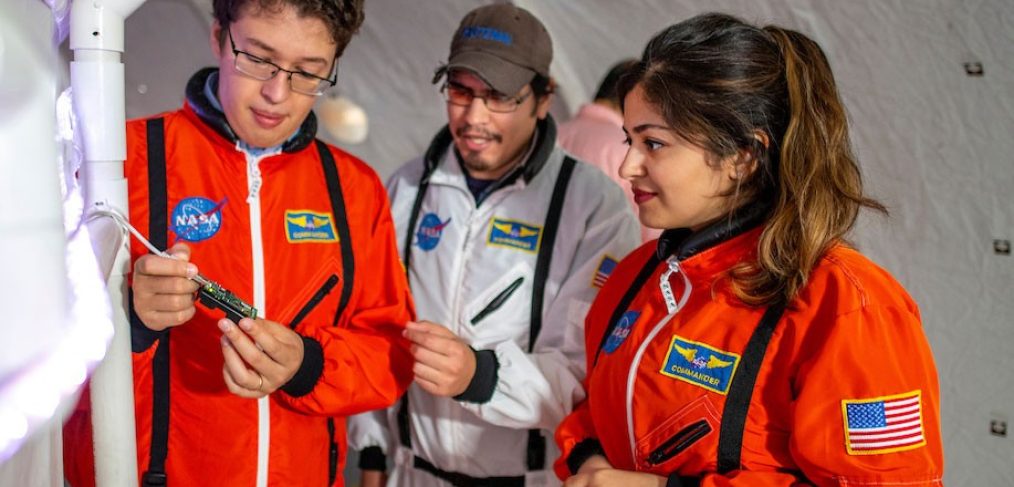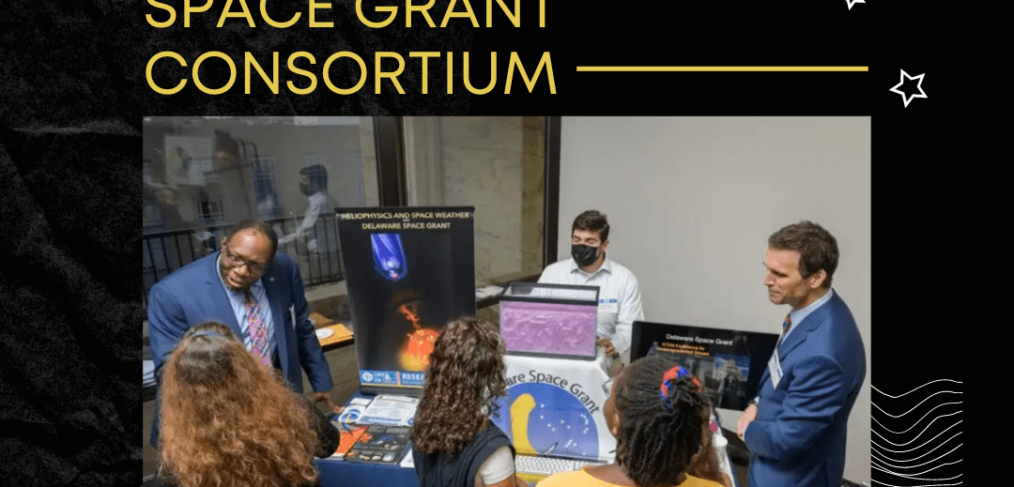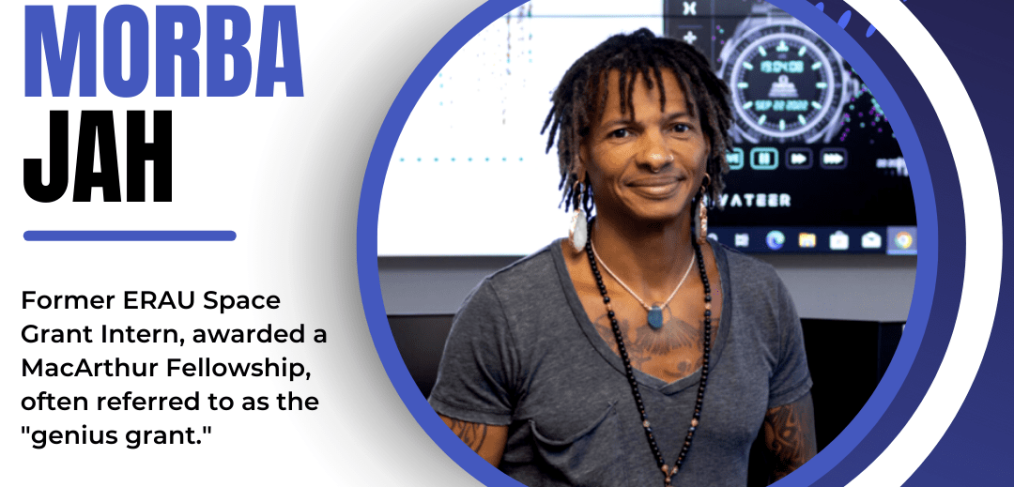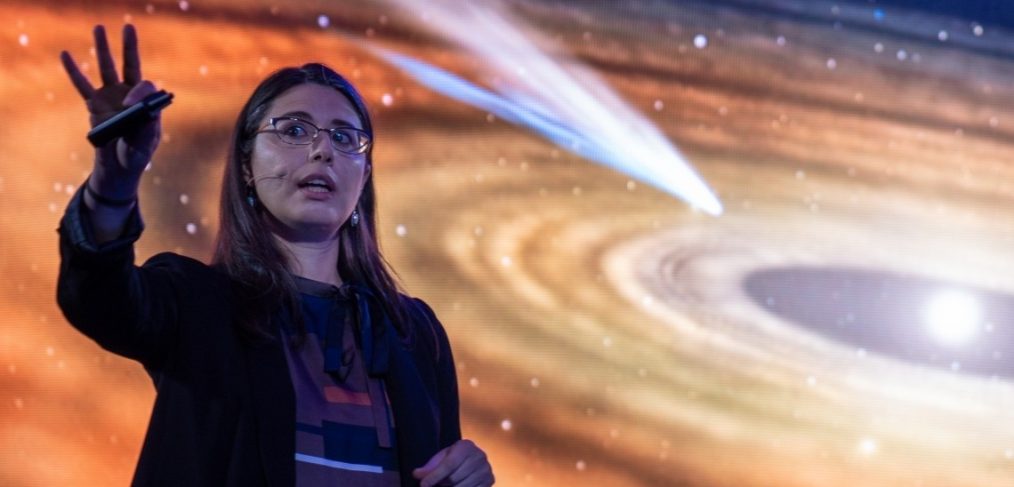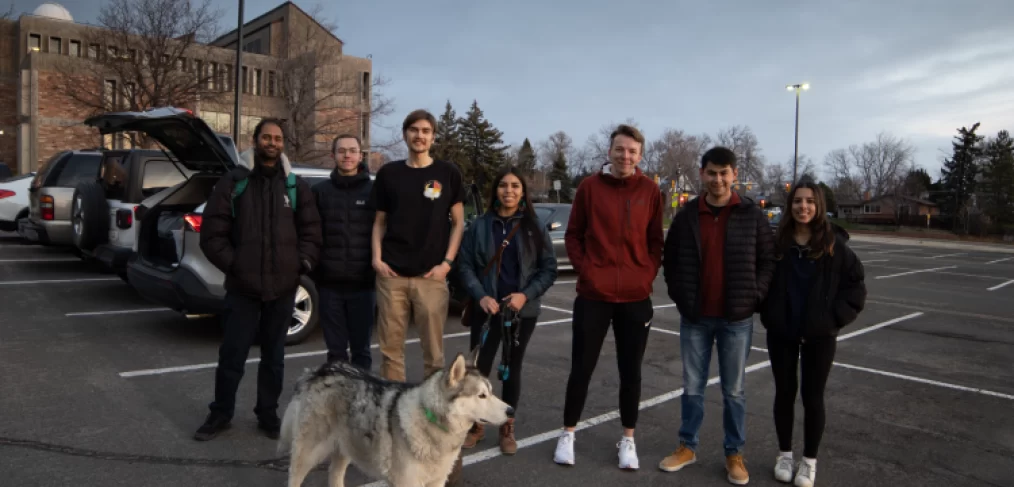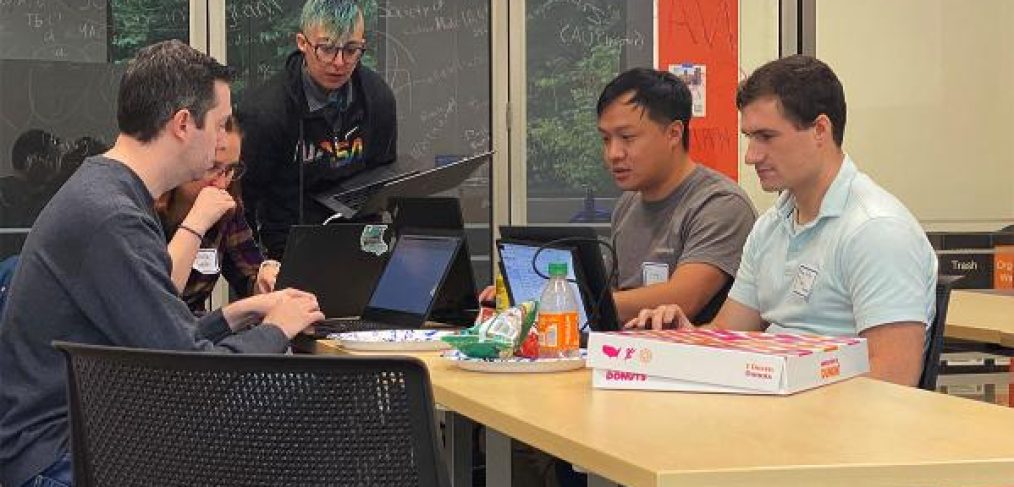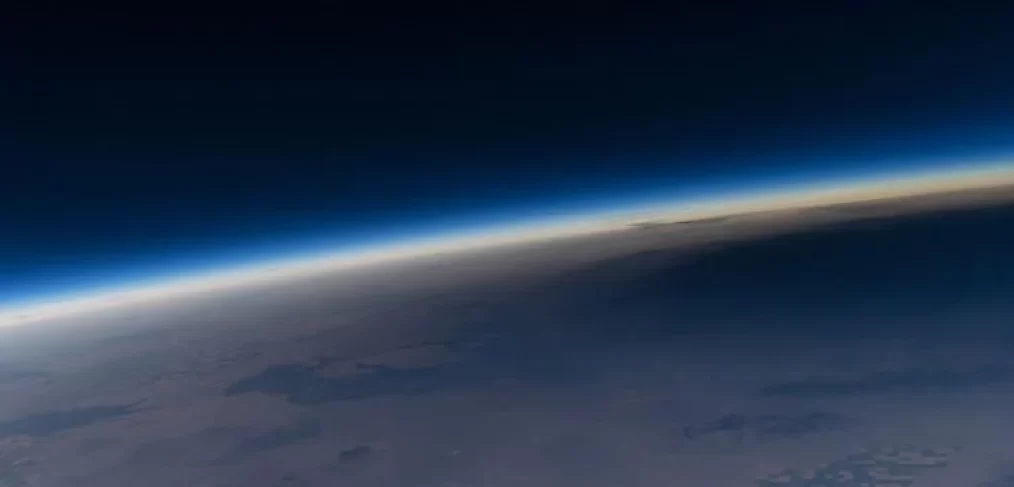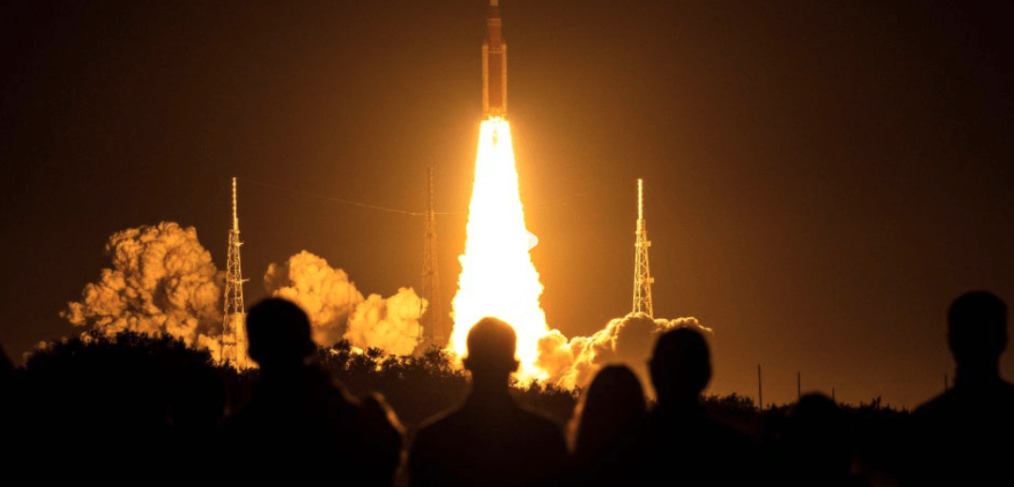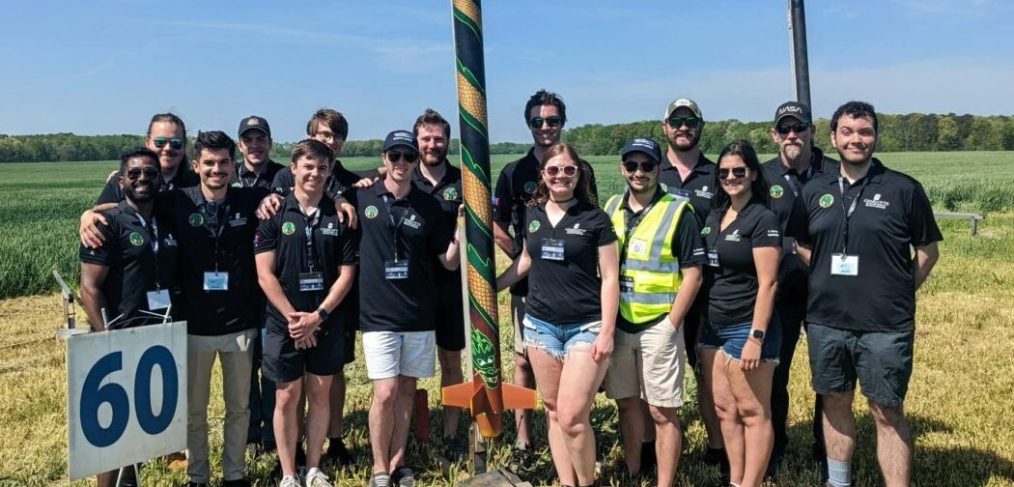The UMaine Space Initiative is pleased to announce recipients of a new seed grant program created to encourage innovative and interdisciplinary collaborations that result in rapid planning, team development, and research coordination in supported topical areas.
UMaine Space administers an Ideas Lab program for the state of Maine, funded by the National Aeronautics and Space Administration (NASA), the Maine Space Grant Consortium (MSGC) Ideas Lab, and UMaine’s Office of Vice President for Research and Dean of the Graduate School.
Read the full article on the UMaine.edu.
Image Credit: UMaine Space
Image Description: Three individuals are pictured in astronaut suits. Two suits are orange and the center person is wearing a white suit. Each suit has a NASA patch on the chest and an American flag patch on the shoulder.
